Introduction
The USS Florida (SSBN 728) is the third Trident-class nuclear-powered fleet ballistic missile submarine constructed by the Electric Boat Division of General Dynamics Corporation in Groton, Connecticut. Designed as a strategic deterrent, she was originally equipped to carry 24 Trident I C-4 ballistic missiles.
The submarine’s keel was laid on July 4, 1976, and she was commissioned into service on June 18, 1983. After completing sea trials, the Florida arrived at her homeport in Bangor, Washington, on March 25, 1984. Over the course of her service as a ballistic missile submarine, she conducted 61 strategic deterrent patrols, contributing to the United States’ nuclear deterrence strategy.
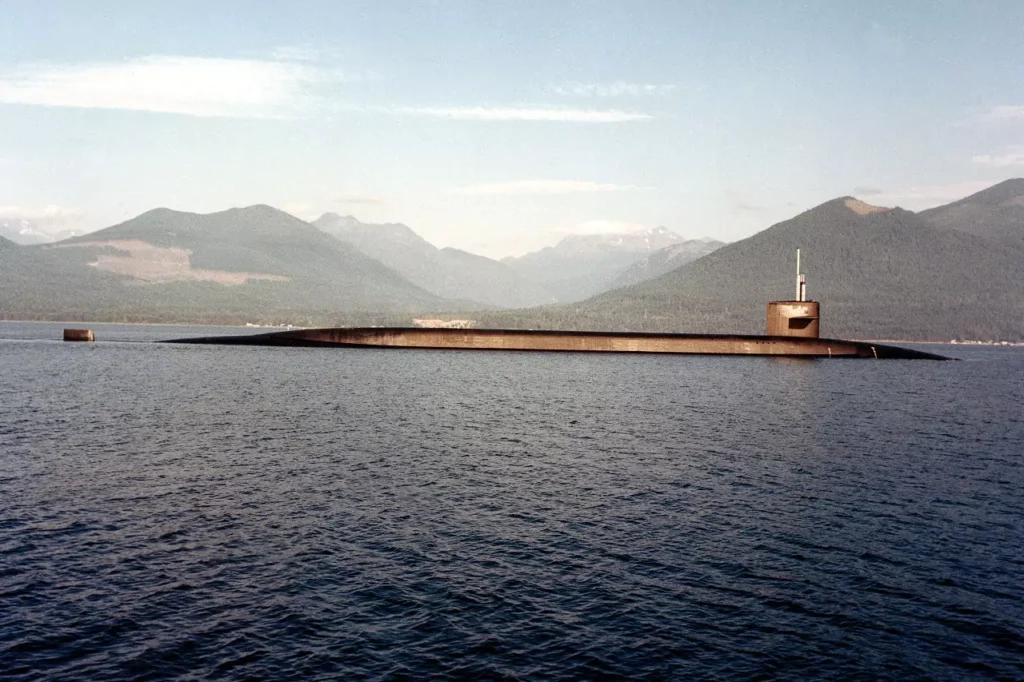
In 2004, the Florida was officially redesignated as a guided missile submarine (SSGN 728). This marked the start of her conversion to support Tomahawk cruise missiles and special operations missions, transforming her role in modern naval warfare.
Note: This article covers only her history as a ballistic submarine.
Namesake
Florida is the first submarine and the sixth U.S. Naval vessel to bear the name.
Other ships named Florida
Before the current USS Florida (SSBN-728), five U.S. Navy vessels carried the name Florida. The first was a survey sloop operating along the southern U.S. coast from 1824 to 1831. The second, a 214-foot sidewheel steamer, served from 1861 to 1867 with the South Atlantic Blockading Squadron, patrolling during the Civil War.
Confederate forces also named two ships Florida—a blockade runner and a cruiser, the latter of which captured 37 Union vessels. A third Navy vessel, originally named Wampanoag, became the Florida in 1869 and was eventually sold in 1885.
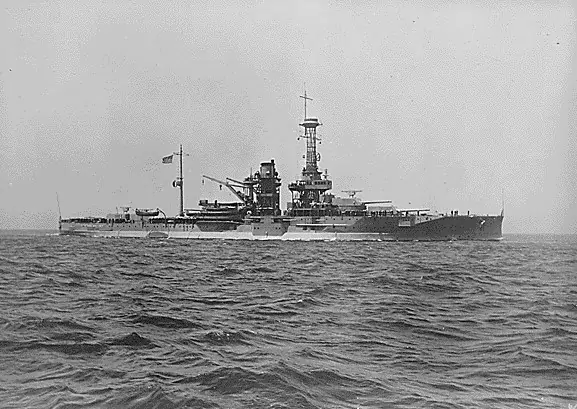
The fourth Florida was a 252-foot monitor that operated as a training vessel and submarine tender from 1901 to 1922. The fifth vessel, Florida (BB-30), was a 521-foot, 21,000-ton battleship commissioned in 1911. She served with the British Grand Fleet during World War I and later performed training duties before being scrapped in 1930 under the London Naval Treaty.
The current USS Florida (SSBN-728), an Ohio-class submarine, continues the legacy as the sixth vessel with this distinguished name.
Specifications
The Trident SSBN is the largest submarine built in the United States. It is 560 feet long, has a diameter of 42 feet, and displaces 18,700 tons when submerged. These submarines are as large as buildings. This is because they have a big nuclear reactor and are designed to carry Trident II missiles. These missiles are thirty-four feet high and stored vertically inside the submarine.
Check Ohio-Class (SSBN-726) Submarine Technical Specification for the ship’s detailed characteristics.
Construction
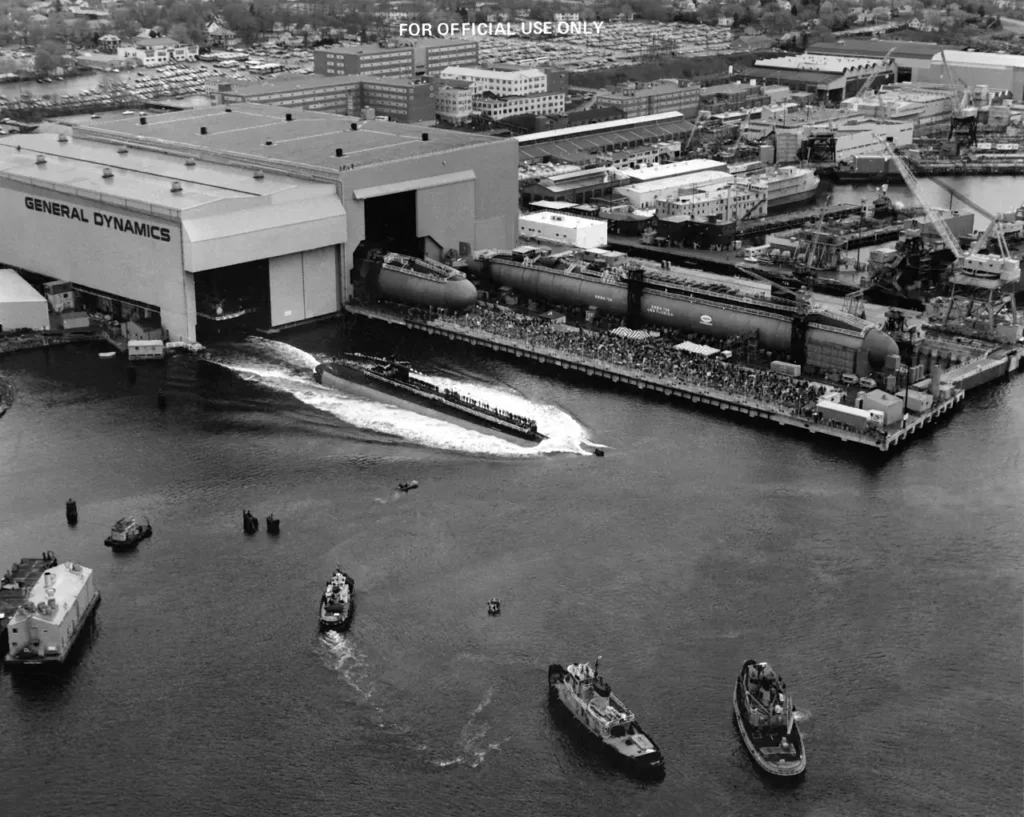
- Builder: Electric Boat Division of General Dynamics, Groton, CT.
- Contract awarded: 28 FEBRUARY 1975
- Keel laying ceremony: 4 JULY 1976
- Sponsor: Mrs. Marcia Myers Carlucci, wife of the Deputy Secretary of Defense.
- Launched: 14 NOVEMBER 1981
- Sea trials start: 21 FEBRUARY 1983
- Delivered: 17 MAY 1983 (43 days ahead of schedule)
Commissioning
- Commissioned: 18 JUNE 1983
- Principal speaker: Senator Paula Hawkins (R-FL)
- Commanding Officer Blue Crew: Captain W. L. Powell
- Commanding Officer Gold Crew: Captain George R. Sterner
Service
- 21 AUGUST 1983 – The Blue Crew of USS FLORIDA (SSBN 728) successfully launched a TRIDENT I (C4) missile in support of the ship’s Demonstration and Shakedown Operation.
- 26 OCTOBER 1983 – USS FLORIDA (SSBN-728) was slightly damaged when it hit an unidentified object while submerged during sea trials in Long Island Sound . No one was injured.
- 25 MARCH 1984 – The arrival of USS FLORIDA (SSBN 728) at Bangor, WA
- 12 APRIL 1984 – USS FLORIDA (SSBN 728) completed her first strategic loadout at Strategic Weapons Facility, Pacific, Bremerton, WA, and deployed.
- 11 MAY 1984 – First patrol began.
- FEB-MAY 1995 – During the 40th strategic deterrent patrol, which included a namesake visit to the State of Florida, USS FLORIDA (SSBN 728) successfully test launched six TRIDENT C-4 missiles in rapid succession, a first for the TRIDENT class.
- 15 JULY 1999 – Florida completed her 50th strategic deterrent patrol.
- 25 MAY 2001 – USS FLORIDA (SSBN 728) completed the 3,500th Strategic Deterrent Patrol by a U.S. Navy Fleet Ballistic Missile (FBM) Submarine.
- 16 OCTOBER 2002 – Completed his sixty-first and last patrol.
- 16 -24 OCTOBER 2002 – Conducted Strategic Missile Off-Load.
- 1 NOVEMBER 2002 – USS FLORIDA (SSBN 728) removed from strategic service before conversion to SSGN.
- 14 & 16 JANUARY 2003 – USS FLORIDA (SSBN 728) successfully launched two TOMAHAWK cruise missiles during an SSGN Demonstration and Validation (DEMVAL) test. The successful flight tests demonstrated that TOMAHAWKS could be launched vertically from an OHIO Class submarine.
- 1 APRIL 2003 – USS FLORIDA (SSBN 728) entered Norfolk Naval Shipyard for SSGN Conversion.
Assignments
| Dates | Unit | Location |
|---|---|---|
| 15 January 1984 - December 2002 | Submarine Squadron (SUBRON ) 17 | Bangor, Wash |
| December 2002 - End Conversion to SSGN | Submarine Squadron (SUBRON ) 6 | Norfolk, Virginia |
Overhauls & Conversions
| Location | Start | End | Comments |
|---|---|---|---|
| TRIDENT Refit Facility (TRF), Bangor, WA | 1 October 1995 | 11 July 1996 | Engineered overhaul (EOH) |
| Norfolk Naval Shipyard | 1 August 2003 | 6 April 2006 | Engineering Refueling Overhaul (ERO) and SSGN Conversion |
Missile Launches
- DASO (Demonstration and Shakedown Operation). These were launches conducted to demonstrate the readiness of the Trident Weapon System and its crew for deployment.
- CINC – Commander-in-Chief.
- OT (Operational Test) / CET (CINC Evaluation Test) These tests provided initial data on the reliability and accuracy of the missile.
- FOT (Follow-on Operational Test / FCET (Follow-On CINC Evaluation Test). Annual launches were designed to ensure that the reliability and accuracy factors were preserved during the system’s life and carried out under tactical conditions to exercise all weapon system elements.
The table below details the launches from 1983 to 2004:
| # | Date | Type | Missile | Status | Comment |
|---|---|---|---|---|---|
| 1 | 21 August 1983 | DASO | Trident C4 | Successfull | Blue Crew |
| 2 | 3 October 1983 | DASO | Trident C4 | Successfull | Gold Crew |
| 3 | 12 September 1984 | OT | Trident C4 | Successfull | |
| 4 | 12 September 1984 | OT | Trident C4 | Successfull | |
| 5 | 12 September 1984 | OT | Trident C4 | Successfull | |
| 6 | 12 September 1984 | OT | Trident C4 | Successfull | |
| 7 | 13 August 1986 | FOT | Trident C4 | Successfull | Blue Crew |
| 8 | 13 August 1986 | FOT | Trident C4 | Successfull | Blue Crew |
| 9 | 19 March 1991 | FCET | Trident C4 | Successfull | Gold Crew |
| 10 | 8 March 1995 | FCET | Trident C4 | Successfull | |
| 11 | 8 March 1995 | FCET | Trident C4 | Successfull | |
| 12 | 8 March 1995 | FCET | Trident C4 | Successfull | |
| 13 | 8 March 1995 | FCET | Trident C4 | Successfull | |
| 14 | 16 March 1995 | FCET | Trident C4 | Successfull | |
| 15 | 16 March 1995 | FCET | Trident C4 | Successfull | Gold Crew |
| 16 | 2 October 1996 | DASO | Trident C4 | Successfull | Gold Crew. DASO following EOH. This was the final C4 TRIDENT I DASO |
Photo Gallery
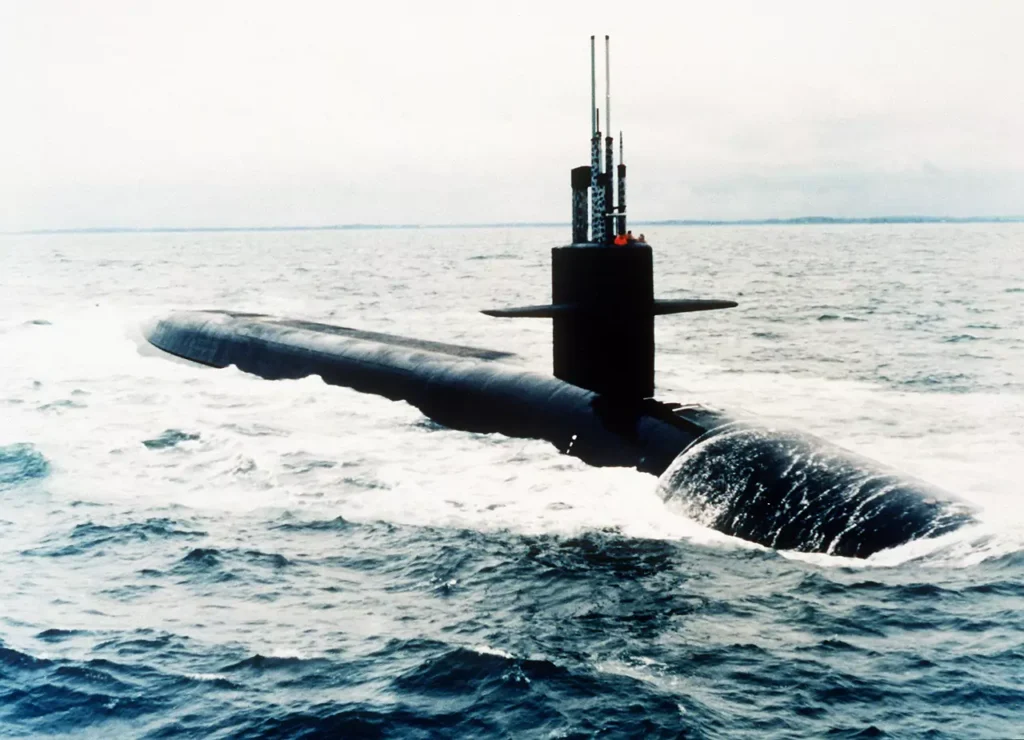
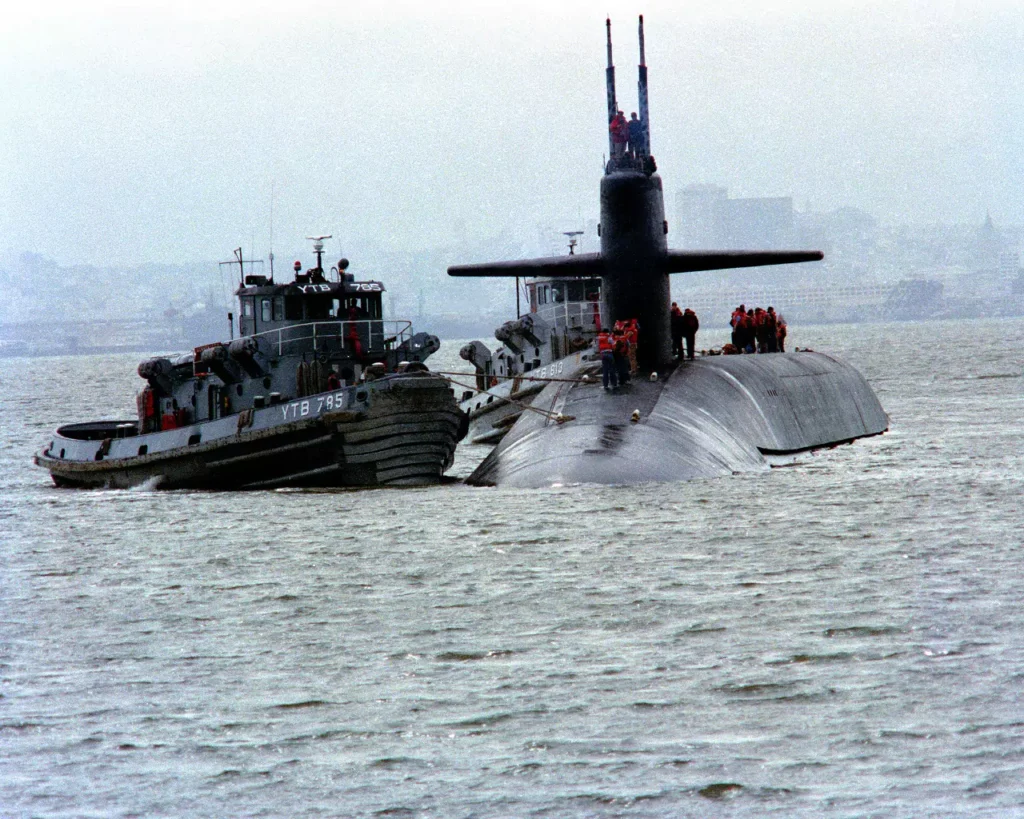
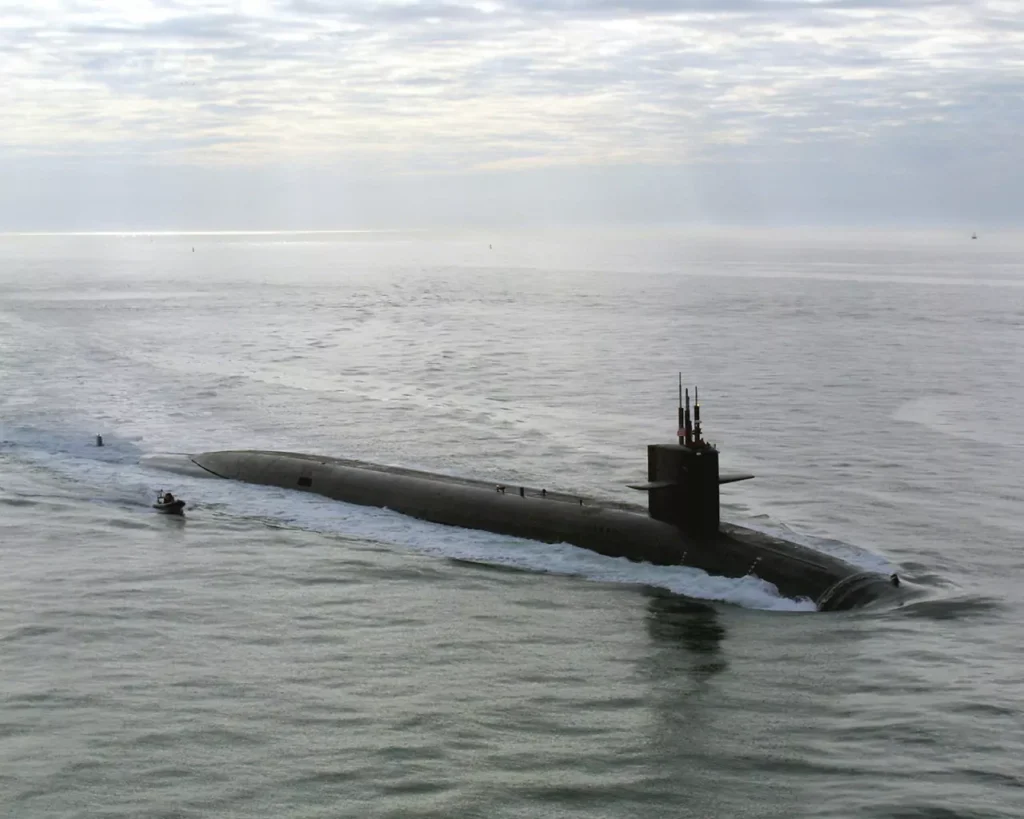
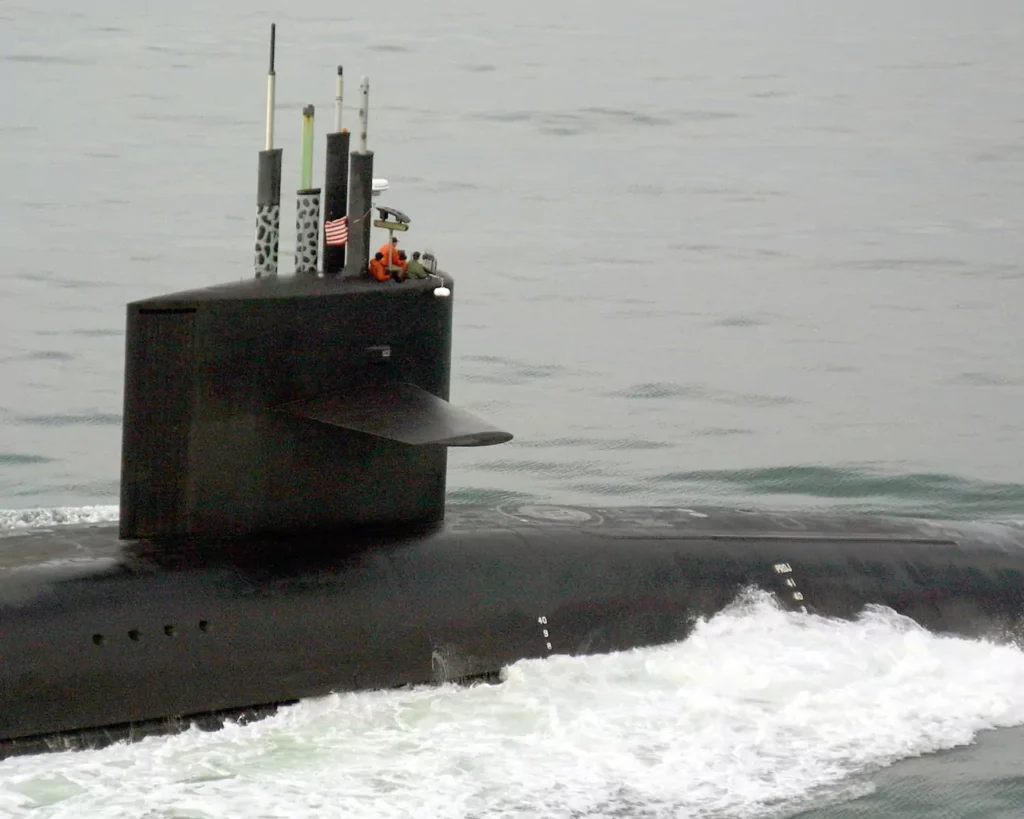
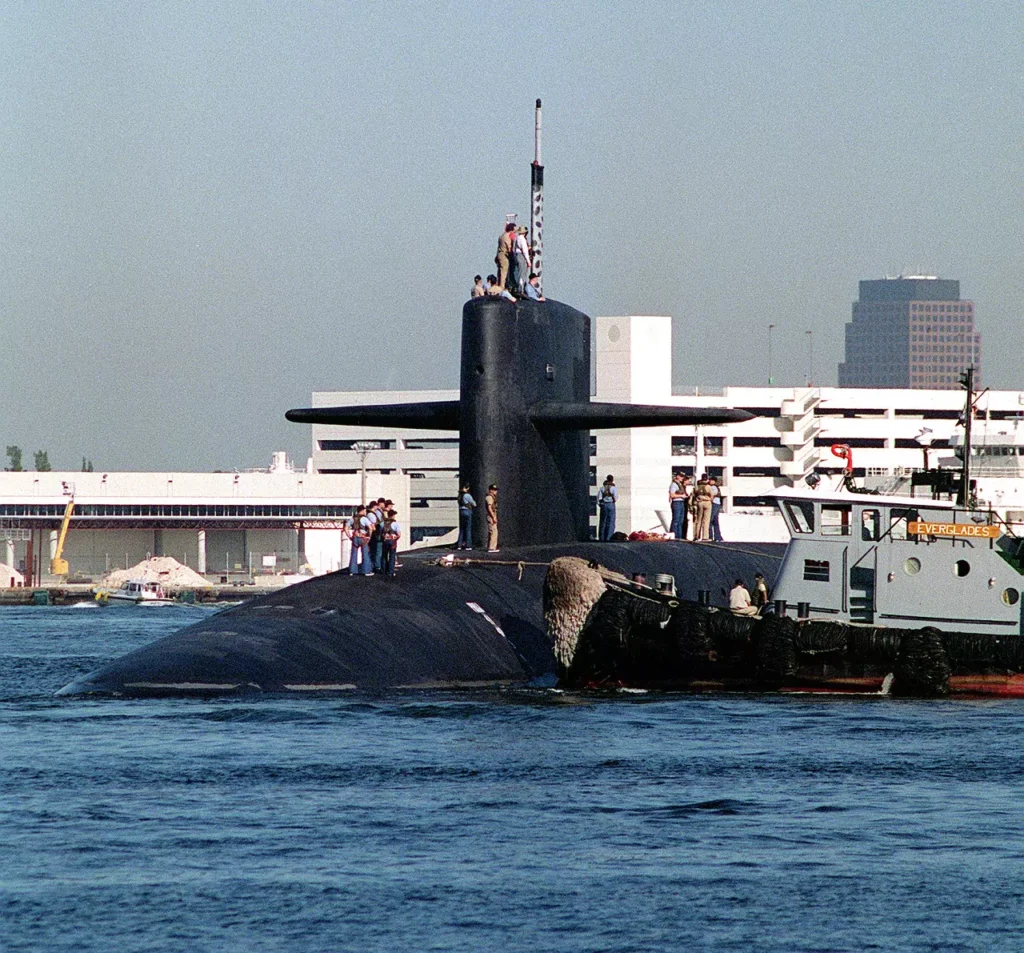
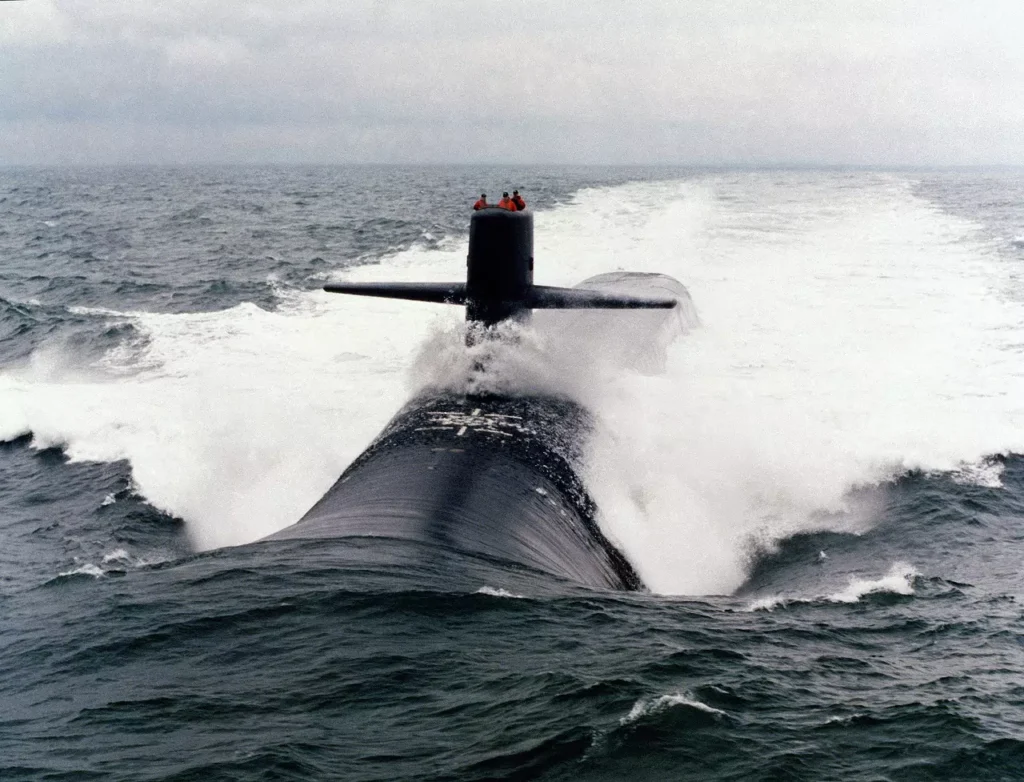
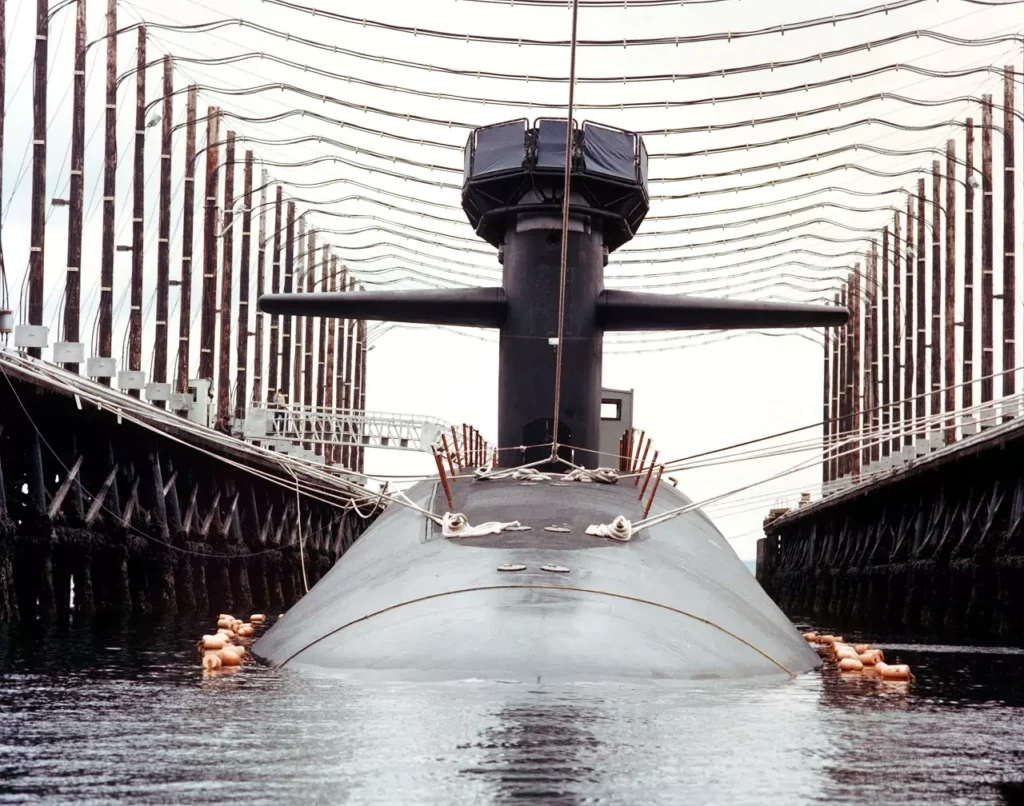
Further reading
- United States Submarine-Launched Ballistic Missiles (SLBM)
- Ohio-Class (SSBN-726) Ballistic Missile Submarines
- Ohio-Class (SSBN-726) Submarine Technical Specification
Other ships of the class:
Bibliography
- Facts/Chronology: Polaris, Poseidon, Trident, 50th Anniversary, Strategic Systems Programs, 2005
- Polmar, N. (2013). The Naval Institute Guide to the Ships and Aircraft of the U.S. Fleet. United Kingdom: Naval Institute.